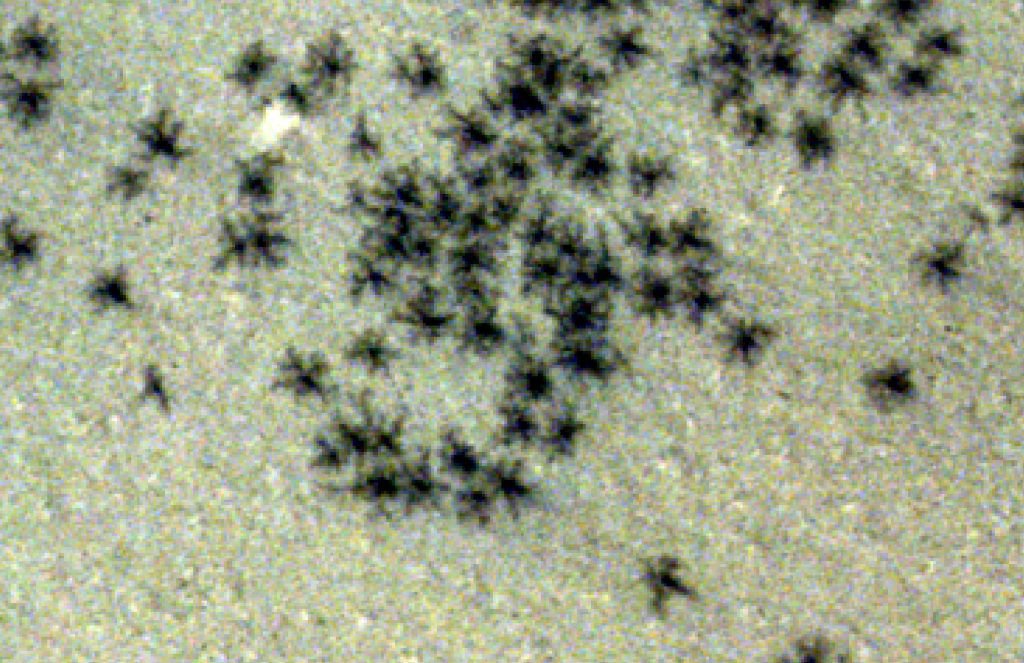The Mars Express, a spacecraft operated by the European Space Agency (ESA), recently captured a photo of Mars that may unsettle individuals with a fear of spiders. However, it is important to note that the peculiar formation seen in the image is not actually a group of arachnids as it may initially appear.

The photograph of Martian “spiders” depicts the seasonal outbursts of carbon dioxide gas on Mars. These dark, slender structures were observed in an area called Inca City in the southern polar region of the Red Planet. Pictures captured by the Mars Express orbiter from ESA and the ExoMars Trace Gas Orbiter reveal dense groupings of dark spots that resemble tiny legs, similar to young spiders gathering closely.
These are simply small, dark-coloured characteristics that start to develop when sunlight hits carbon dioxide accumulated during the winter months of the planet. The sunlight triggers the carbon dioxide ice at the base of the accumulations to transform into gas, which then breaks through ice layers that may be as thick as three feet, releasing dust in geyser-like eruptions before landing on the surface.
The European Space Agency clarified that although the spots may appear small when viewed from space, they are actually quite sizable. The agency stated that these patches can be as large as 145 feet at their maximum, and could even span over half a mile in width. Beneath these large spots, a pattern resembling that of an arachnid is etched into the carbon dioxide ice.
The Mars Express image released by ESA reveals numerous dark spots scattered across its surface. Although the majority of these spots are concentrated in the dark region to the left, which is located on the outskirts of a section of Mars known as Inca City, they appear as small spots. The name “Inca City” was given to this area due to its resemblance to Inca ruins, characterized by a linear and geometric network of ridges. NASA’s Mariner 9 probe first discovered this intriguing region in 1972.
Scientists have yet to determine the exact process that led to the formation of Inca City, however, there is a hypothesis suggesting that sand dunes may have solidified into stone gradually. The substance found within it, potentially magma or sand, appears to be penetrating through fractured layers of rock on Mars. In the central part of the scene, the terrain undergoes a transformation, displaying circular and oval patterns that resemble marble. It is believed that this pattern emerges as layered deposits erode over an extended period.

